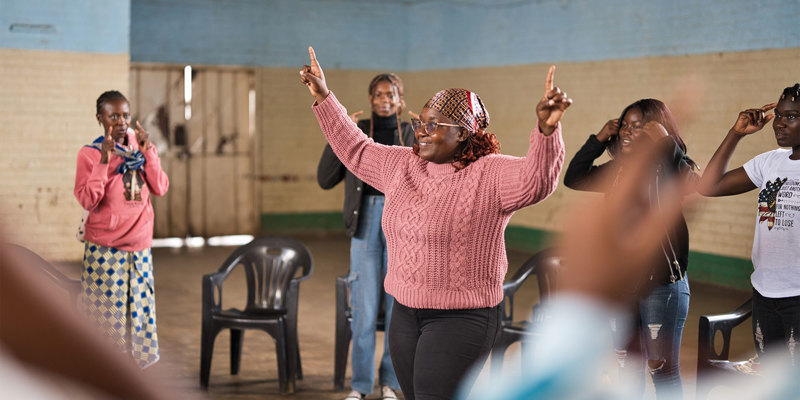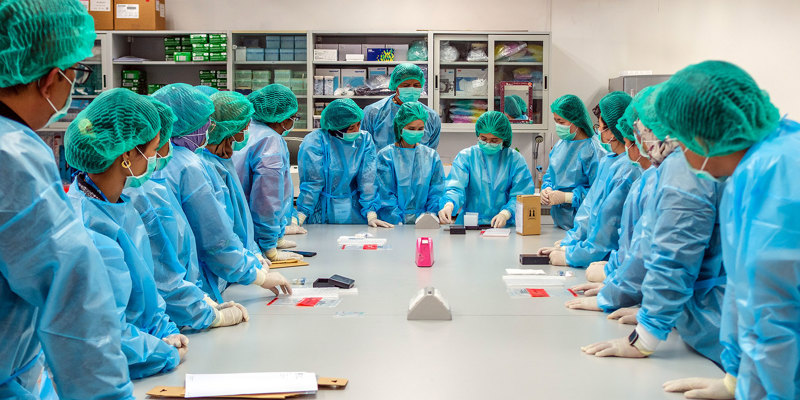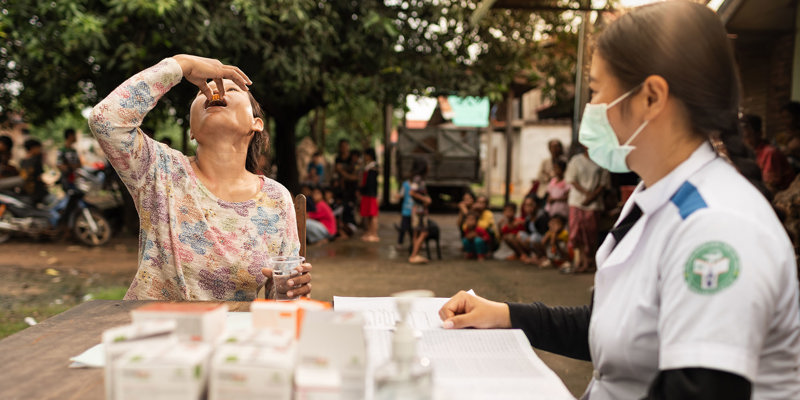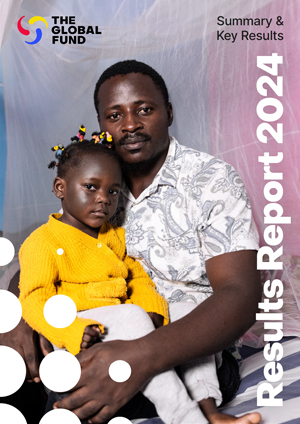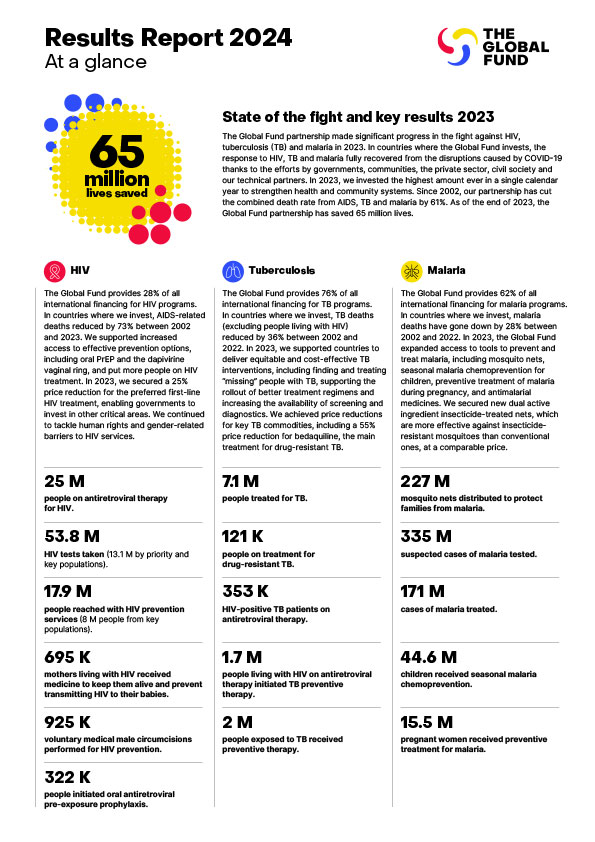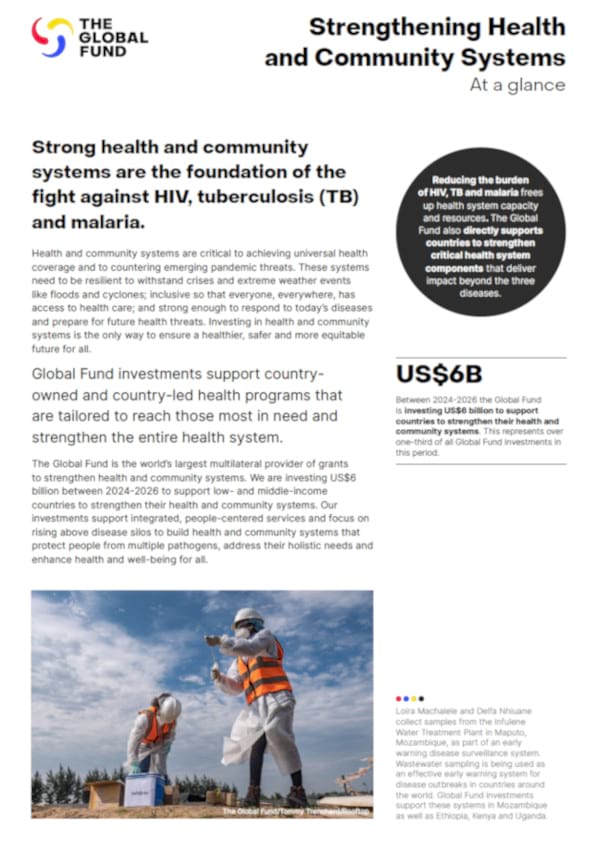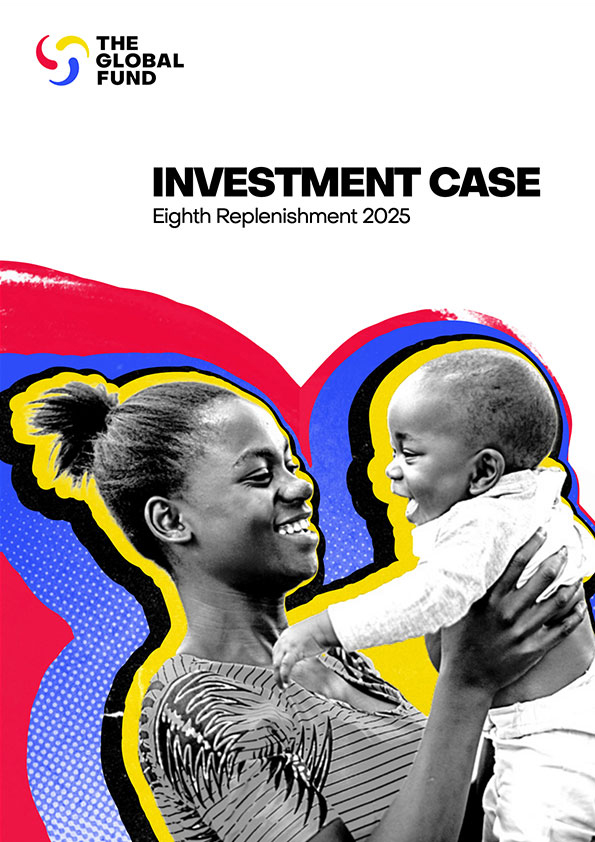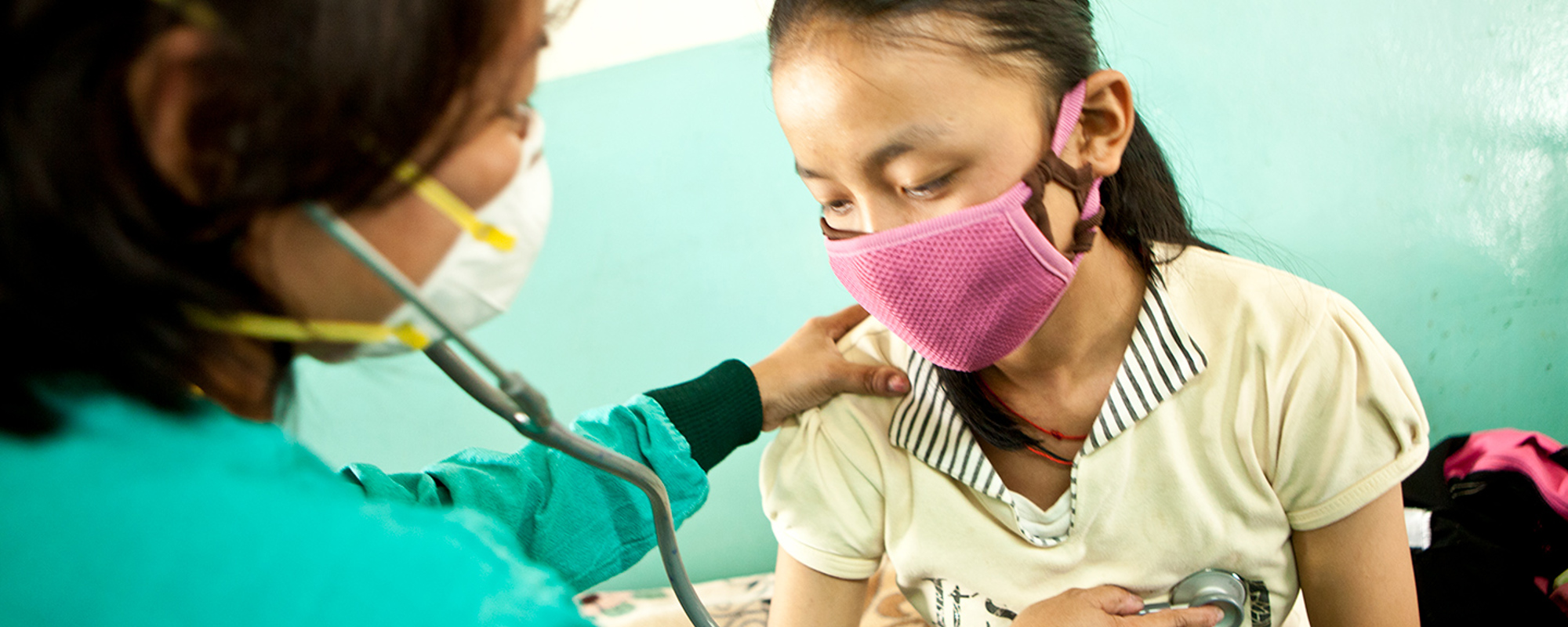

Why drug-resistant tuberculosis poses a major risk to global health security
This week marks World Antimicrobial Awareness Week, which aims to increase awareness of global antimicrobial resistance – “superbugs” that have become resistant to the antibiotics or medicines usually used to treat them. Antimicrobial resistance is one of the biggest threats to our global health and economic security.
For example, deaths from drug-resistant tuberculosis account for about one-third of all antimicrobial resistance deaths worldwide. To better understand how antimicrobial resistance effects the fight against tuberculosis, the Global Fund’s Head of TB Dr. Eliud Wandwalo answers questions on drug-resistant TB and why it remains a major risk to global health security.
What is drug-resistant tuberculosis?
Drug-resistant tuberculosis (DR-TB) is a form of antimicrobial resistance that is difficult and costly to treat. It is caused by TB bacteria that are resistant to at least one of the first-line existing TB medications, resulting in fewer treatment options and increasing mortality rates.
Multidrug-resistant TB (MDR-TB) is defined as TB bacteria that are resistant to two of the most important TB drugs, isoniazid (INH) and rifampicin (R).
Extensively drug-resistant tuberculosis (XDR-TB) is characterized when a person develops MDR-TB which is resistant to additional drugs including fluoroquinolones and injectables.
What is the state of the fight against drug-resistant TB?
Overall, TB deaths have dropped by 25% since the Global Fund was founded in 2002. Yet in 2020, disruptions caused by the COVID-19 pandemic could lead to an additional 525,000 deaths from TB. In addition, the drug-resistant forms of the disease could rise, complicating an already dire situation.
In 2019, an estimated 500,000 people developed DR-TB and 182,000 died globally. Less than 60% of MDR-TB patients who initiate treatment are successfully treated, mostly due to high mortality and falling out of treatment programs. Outcomes for individuals with XDR-TB are even worse, with approximately only one-third of patients successfully treated.
As treatment is long and hard, DR-TB patients often stop treatment before they should and when untreated or inadequately treated, they continue transmitting drug-resistant bacteria to others and have a higher risk of mortality.
How does the Global Fund contribute to fighting drug-resistant TB?
The Global Fund and its partners are supporting countries to transition to new all-oral regimens including new drugs (bedaquiline and delamanid) for the treatment of DR-TB. By the end of 2020, at least 125,000 people will have access to these regimens/medicines. The Global Fund also invests in rapid molecular diagnostic machines including GeneXpert tests which allow the screening of thousands of people with TB/DR-TB around the world quickly and efficiently, and which are now also used to test COVID-19. But technology alone is not enough. Community health workers are vital to the fight against TB – they provide assistance, raise awareness, fight stigma and improve access to TB services, treatment and care.
Treating DR-TB costs more and needs prolonged treatment duration. To step up the fight and achieve the global goal of ending TB as an epidemic by 2030, increased international funding and domestic resource allocation is urgently needed. The Global Fund provides 73% of all international financing for TB. Today, however, efforts to fight TB and DR-TB remain largely under-resourced.
